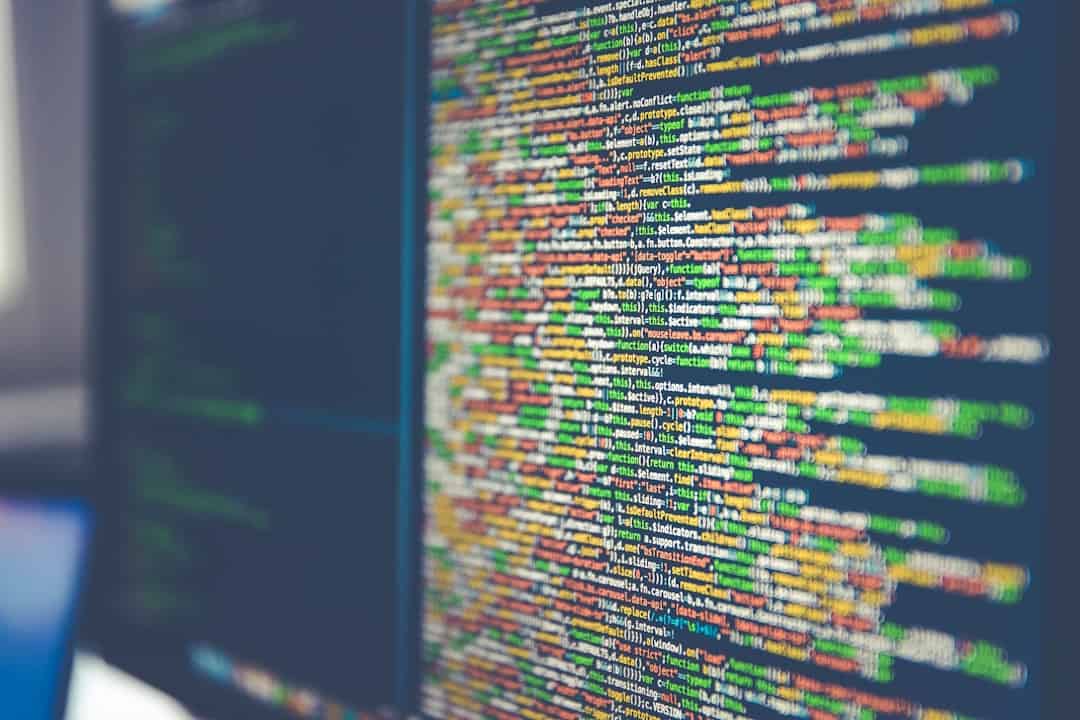Artificial Intelligence (AI) is a field of computer science focused on creating intelligent machines capable of performing tasks that typically require human intelligence. These tasks include visual perception, speech recognition, decision-making, and language translation. Deep learning, a subset of AI, utilizes neural networks to mimic human brain data processing and pattern recognition for decision-making.
Deep Learning algorithms are designed to learn from vast amounts of data and improve performance over time without human intervention. Deep learning models consist of multiple layers of interconnected nodes, or neurons, that process and transform input data to generate output. These models are trained using backpropagation, a technique where the algorithm adjusts the weights of connections between neurons to minimize the difference between predicted and actual output.
This process enables deep learning models to recognize patterns in data and make predictions or decisions based on that information. Deep learning has transformed AI by allowing machines to learn from experience, adapt to new inputs, and perform tasks previously thought to be beyond computer capabilities.
Key Takeaways
- AI is the simulation of human intelligence processes by machines, while deep learning is a subset of AI that uses neural networks to mimic human decision-making.
- Deep learning plays a crucial role in advancing AI technology by enabling machines to learn from data and make complex decisions without human intervention.
- Deep learning has a wide range of applications in AI, including natural language processing, image recognition, and autonomous vehicles.
- Case studies and success stories demonstrate the power of deep learning in AI, such as Google’s AlphaGo and Tesla’s self-driving cars.
- Challenges in deep learning for AI implementation include the need for large amounts of data, computational power, and interpretability of results.
The Role of Deep Learning in Advancing AI Technology
Advancements in AI Tasks
Deep learning has led to significant improvements in various AI tasks, including image and speech recognition, natural language processing, and autonomous decision-making. These advancements have enabled machines to perform tasks with a higher degree of accuracy and efficiency, making them more reliable and effective.
Real-World Applications
The impact of deep learning can be seen in various real-world applications. For instance, deep learning algorithms have been used to train self-driving cars to recognize and respond to different traffic conditions, leading to significant advancements in autonomous vehicle technology. In the healthcare industry, deep learning has been applied to analyze medical images and diagnose diseases with a level of accuracy that rivals human experts.
A Driving Force for Innovation
Overall, deep learning has been instrumental in pushing the boundaries of what AI can achieve, making it an indispensable tool for driving innovation in various fields. Its ability to enable machines to learn and improve on their own has opened up new possibilities for AI to transform industries and revolutionize the way we live and work.
Exploring the Applications of Deep Learning in AI

The applications of deep learning in AI are vast and diverse, spanning across different industries and domains. In the field of computer vision, deep learning has been used to develop systems that can accurately identify and classify objects within images and videos. This has led to advancements in facial recognition technology, object detection, and image segmentation, with applications ranging from surveillance and security to augmented reality and virtual reality.
In natural language processing, deep learning has enabled machines to understand and generate human language with a high degree of accuracy. This has paved the way for virtual assistants, chatbots, and language translation systems that can communicate with users in a more natural and intuitive manner. Deep learning has also been applied to recommendation systems, which use algorithms to analyze user preferences and behavior in order to provide personalized recommendations for products, services, and content.
In addition, deep learning has found applications in finance, where it is used for fraud detection, risk assessment, and algorithmic trading. In the field of healthcare, deep learning is being used for medical imaging analysis, drug discovery, and personalized medicine. The potential applications of deep learning in AI are virtually limitless, with ongoing research and development efforts continuing to expand its capabilities across various domains.
Unleashing the Power of Deep Learning in AI: Case Studies and Success Stories
| Case Study | Success Story | Metrics |
|---|---|---|
| Medical Imaging | Improved accuracy in diagnosing diseases | Increased sensitivity and specificity |
| Natural Language Processing | Enhanced language translation and sentiment analysis | Higher accuracy in language understanding |
| Autonomous Vehicles | Improved object detection and decision making | Reduced error rates in driving tasks |
There are numerous case studies and success stories that demonstrate the power of deep learning in AI across different industries. One notable example is the use of deep learning in image recognition by companies like Google and Facebook. These companies have developed deep learning models that can accurately identify objects within images, tag them with relevant keywords, and even generate captions describing the content of the image.
This technology has been integrated into their platforms to improve user experience and enable new features such as automatic photo tagging and content moderation. In the healthcare industry, deep learning has been used to develop systems for diagnosing diseases from medical images with a level of accuracy that rivals human experts. For example, researchers have trained deep learning models to analyze medical scans such as X-rays, MRIs, and CT scans to detect conditions such as cancer, tumors, and fractures.
These systems have the potential to revolutionize medical diagnosis by providing faster and more accurate assessments, leading to better patient outcomes. Another success story is the use of deep learning in natural language processing for developing virtual assistants and chatbots. Companies like Amazon, Apple, and Microsoft have integrated deep learning algorithms into their virtual assistant platforms such as Alexa, Siri, and Cortana to enable more natural language interactions with users.
These virtual assistants can understand spoken commands, answer questions, perform tasks, and even engage in conversations with users using advanced natural language understanding capabilities.
Overcoming Challenges in Deep Learning for AI Implementation
While deep learning has shown great promise in advancing AI technology, there are still several challenges that need to be addressed for its successful implementation. One of the main challenges is the need for large amounts of labeled training data to effectively train deep learning models. Collecting and annotating such data can be time-consuming and expensive, especially for tasks that require specialized domain knowledge or rare events.
Another challenge is the interpretability of deep learning models, as they often function as black boxes that make it difficult to understand how they arrive at their decisions. This lack of transparency can be a barrier to adoption in critical applications such as healthcare and finance where explainability is crucial for regulatory compliance and ethical considerations. Furthermore, deep learning models are computationally intensive and require significant computing resources for training and inference.
This can be a barrier for organizations with limited access to high-performance computing infrastructure or constrained budgets. To overcome these challenges, ongoing research efforts are focused on developing techniques for training deep learning models with limited data, improving model interpretability through explainable AI methods, and optimizing algorithms for efficient deployment on edge devices with limited computational resources.
The Future of Deep Learning and AI: Emerging Trends and Opportunities

Convergence of Deep Learning with Other AI Techniques
One of the key trends is the convergence of deep learning with other AI techniques such as reinforcement learning and unsupervised learning to create more powerful and versatile AI systems. This convergence is expected to lead to advancements in areas such as robotics, autonomous systems, and personalized recommendation engines.
Democratization of Deep Learning
Another emerging trend is the democratization of deep learning through the development of user-friendly tools and platforms that make it more accessible to a wider audience. This includes the development of automated machine learning (AutoML) tools that enable non-experts to build and deploy deep learning models without requiring extensive technical expertise.
New Frontiers for Deep Learning Applications
Furthermore, there are opportunities for applying deep learning in new domains such as climate science, sustainability, and social good initiatives. For example, deep learning can be used to analyze satellite imagery for monitoring environmental changes, predict natural disasters, or optimize resource allocation for humanitarian aid efforts. Overall, the future of deep learning and AI holds immense potential for driving innovation and creating new opportunities across diverse fields, paving the way for a more intelligent and connected world.
Harnessing the Potential of Deep Learning for AI in Various Industries
The potential of deep learning for AI is being harnessed across various industries to drive innovation and create new opportunities for growth. In the automotive industry, deep learning is being used to develop advanced driver assistance systems (ADAS) that can enhance vehicle safety by detecting obstacles, predicting collisions, and enabling autonomous driving capabilities. Companies like Tesla have integrated deep learning algorithms into their vehicles to enable features such as autopilot mode and self-parking functionality.
In the retail industry, deep learning is being applied to improve customer experience through personalized recommendations, demand forecasting, and inventory management. E-commerce platforms use deep learning algorithms to analyze customer behavior and preferences in order to provide tailored product recommendations and optimize pricing strategies. In the financial sector, deep learning is being used for fraud detection, risk assessment, and algorithmic trading.
Banks and financial institutions leverage deep learning models to analyze transaction data for detecting fraudulent activities in real-time, identifying patterns indicative of potential risks, and making automated trading decisions based on market trends. Moreover, in the entertainment industry, deep learning is being utilized for content recommendation systems that personalize user experiences across streaming platforms such as Netflix and Spotify. These platforms use deep learning algorithms to analyze user interactions with content in order to recommend movies, TV shows, music playlists, or podcasts that align with their preferences.
Overall, the potential of deep learning for AI is being leveraged across diverse industries to drive innovation, improve efficiency, and create new opportunities for delivering value to customers and stakeholders alike.
If you’re interested in diving deeper into deep learning, you should check out the article “The Deep Learning Revolution” on Metaversum’s resources and further reading page. This article provides a comprehensive overview of the current state of deep learning and its potential impact on various industries. You can find it here.
FAQs
What is deep learning?
Deep learning is a subset of machine learning, which is a type of artificial intelligence (AI) that involves training algorithms to learn from data. Deep learning specifically involves using neural networks with multiple layers to learn and make decisions from large amounts of data.
What are the applications of deep learning?
Deep learning has a wide range of applications, including image and speech recognition, natural language processing, autonomous vehicles, healthcare diagnostics, and financial forecasting. It is also used in recommendation systems, fraud detection, and many other areas.
How does deep learning work?
Deep learning algorithms work by using layers of interconnected nodes, or neurons, to process and learn from data. These layers are able to automatically extract features from the input data and make increasingly complex and abstract representations as the data passes through the network.
What are some popular deep learning frameworks?
Some popular deep learning frameworks include TensorFlow, PyTorch, Keras, and Caffe. These frameworks provide tools and libraries for building and training deep learning models, and are widely used in both research and industry.
What are the challenges of deep learning?
Challenges of deep learning include the need for large amounts of labeled data for training, the complexity of designing and tuning neural network architectures, and the computational resources required for training and inference. Additionally, deep learning models can be difficult to interpret and explain.











Leave a Reply